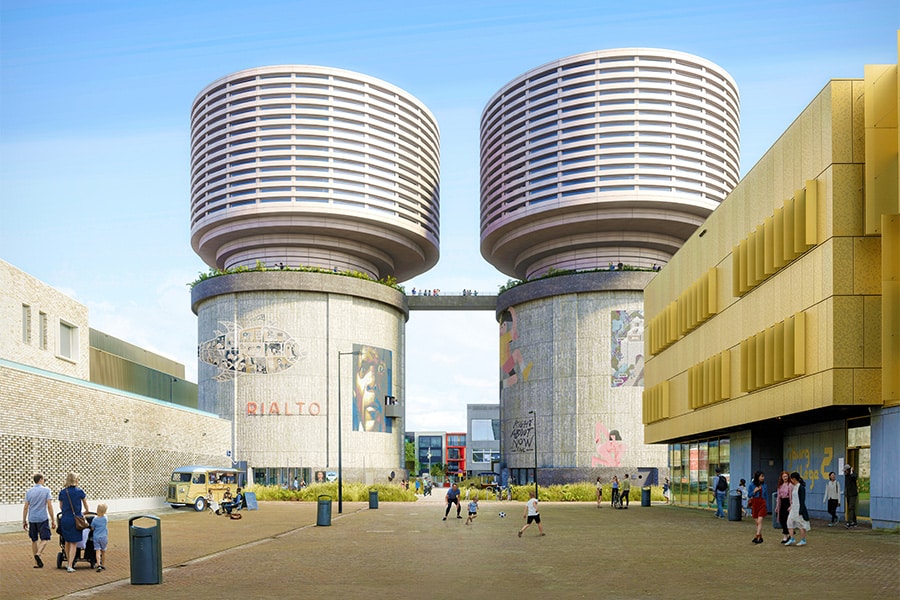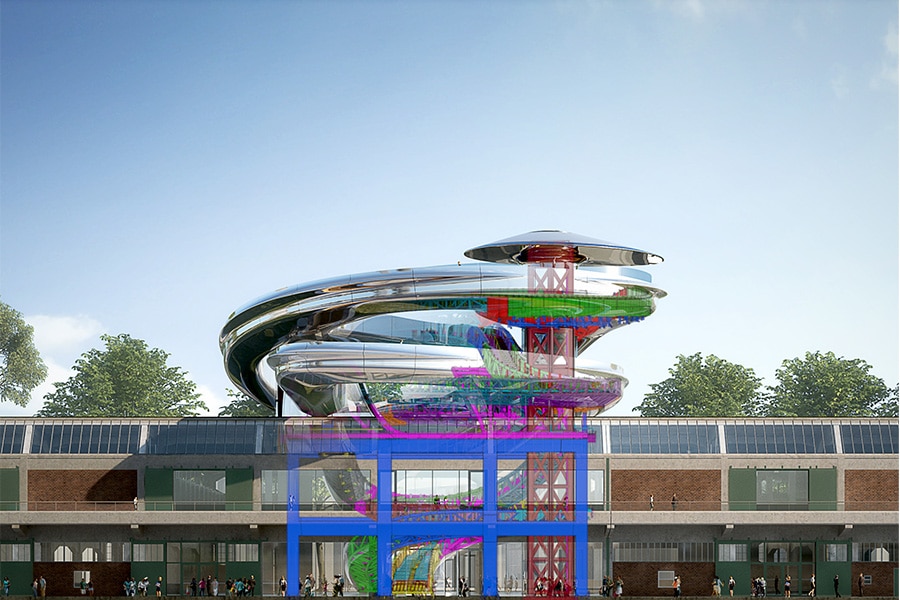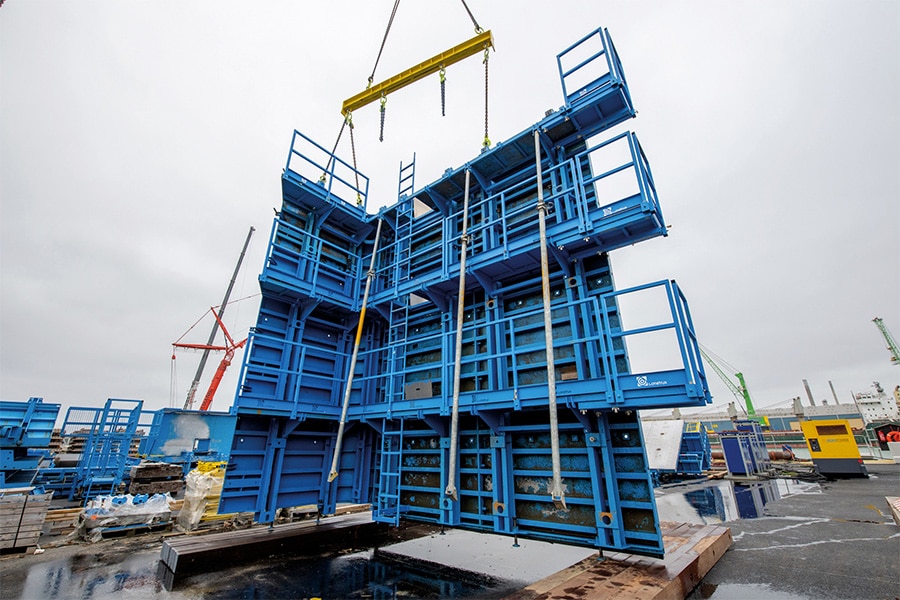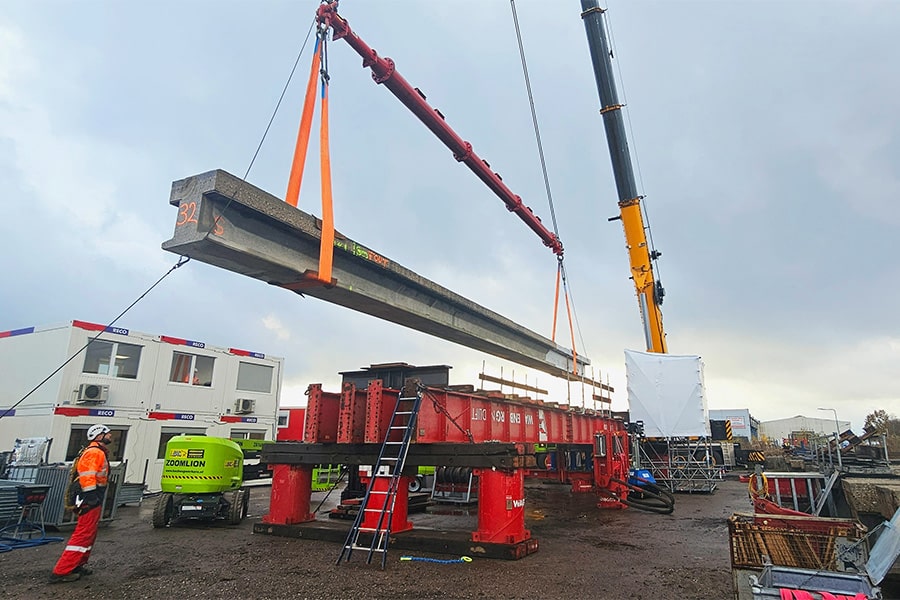
Smart test rig to reuse girders from A9 also circular itself
As part of Rijkswaterstaat's SBIR (Strategic Business Innovation Research) Circular Viaducts in 2023, concrete girders released during the widening of the A9 near Amstelveen were harvested. The aim is to reuse these girders, with which RWS wants to contribute to its ambition of working in a circular and climate-neutral way by 2030. In order to investigate whether the HNP girders were suitable for application in a new viaduct over the A76 near Nuth, a test rig was made late last year where 6 out of 30 girders were tested and found suitable. Wagenborg Nedlift provided a clever setup for this purpose, again from existing materials.
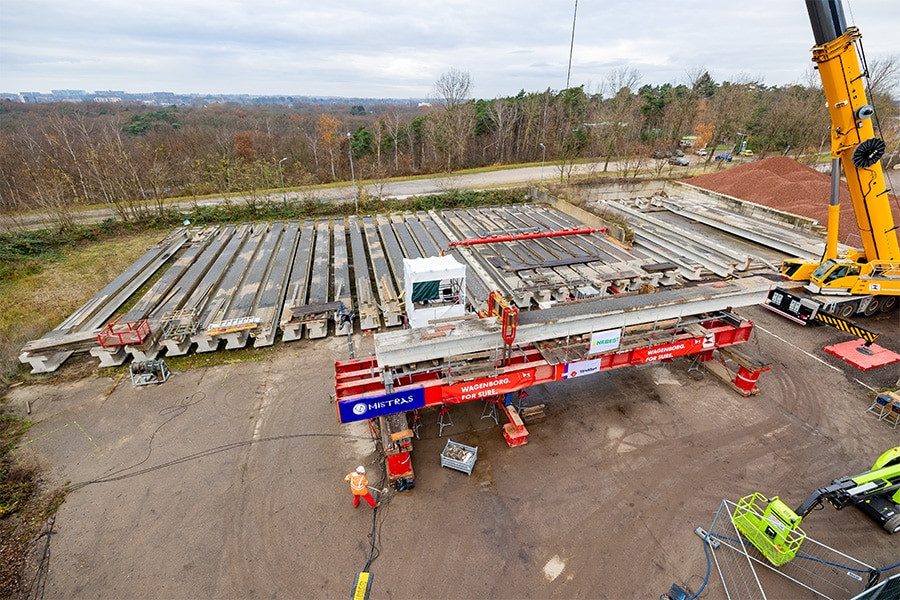
The purpose of SBIR Circular Viaducts was to challenge companies to contribute with solutions to the need for circular work. With their consortium Closing the Loop, Nebest, Antea Group, Strukton and GBN won the innovation competition. Their concept involves making a series of viaducts feasible with at least 70% deployment of high-quality reuse. One of those viaducts will be realized near Nuth, where the Daelderweg crosses the A76. For this, 50-year-old girders harvested from the Keizer Karel viaduct over the A9 near Amstelveen are being used. These still have an expected remaining lifespan of 100 years. However, reuse was only possible if they meet the applicable standards. The fully prestressed beams were made without stirrup reinforcement, so testing the shear force resistance was necessary.
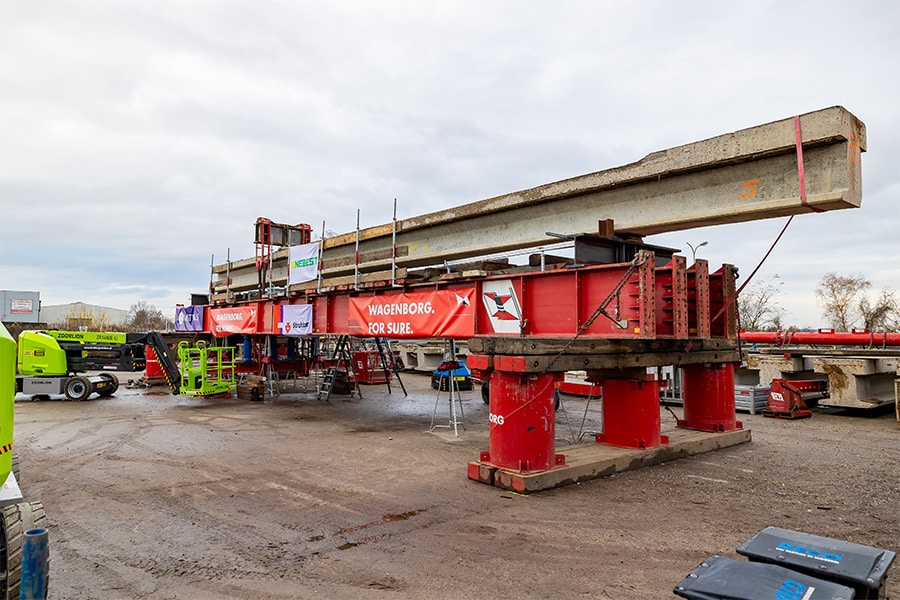
Cheaper and smarter
Nebest designed a test protocol for this, with which Strukton approached Wagenborg Nedlift to make a test rig for this. "The original request was to build a new structure," explains Bart Schutte. "We rejected building a test rig from new material, because we are not a steel builder. We did continue to discuss other possible solutions. Supplying a test rig equipped with 300T ballast would involve a lot of transport movements and changing the test beams would take a long time because the ballast had to be stacked and unstacked each time. We figured we could use our existing equipment to build a rig with similar functionality to the first one, but with existing equipment that could be used elsewhere after testing. This was a total of less than 60 tons of transportable weight, many times less than the setup with ballast weights. That saves in transport and CO2 emissions and, above all, is circular, which fits the idea of the Closing the Loop story."
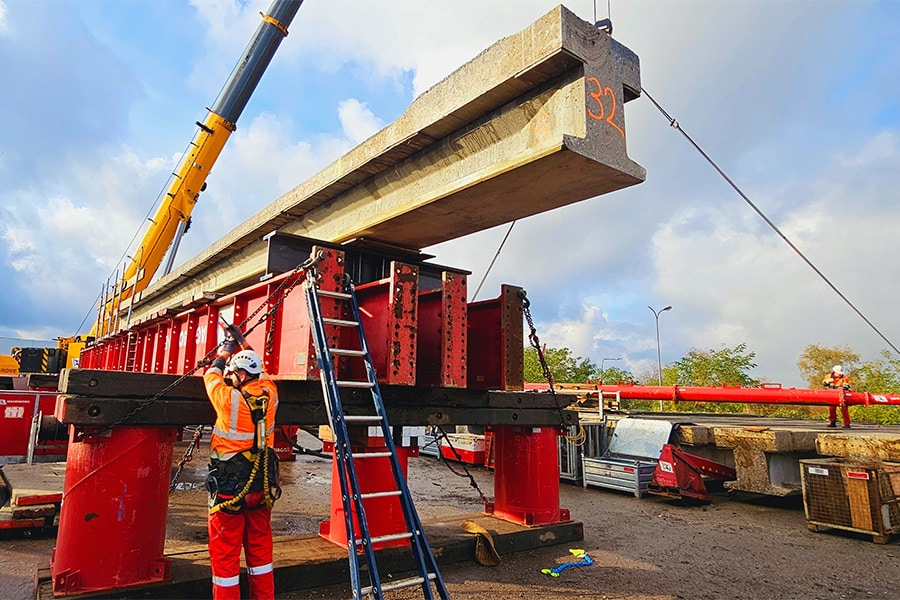
Jacks at the bottom
Wagenborg frequently performs testing of structures. Schutte: "These are mainly steel structures for the offshore wind industry. This is our first test rig for concrete. With our experience we are able to provide smart solutions. In this case, a setup where the objects to be tested can be changed quickly. This is set up next to the girders' storage location in Nuth. As a base, so-called elephant legs on dragline bulkheads serve as the foundation. Four HEM 1000 girders were placed over these with a beam on each side on which the concrete girders rest. Nebest equipped the test girders with various sensors. The pressure for the test is provided by jacks suspended under the steel girders. These pull down the pressure point on the concrete girder via loops. This keeps all forces within the test setup and allows for a quick change of test object."
The measurement data from this study showed that the girders are strong enough to be used for the viaduct over the A76 and have a lifespan of at least 100 years there. A great result that may have a sequel in more projects of Rijkswaterstaat. The materials from the test set-up have since been used in other projects.
